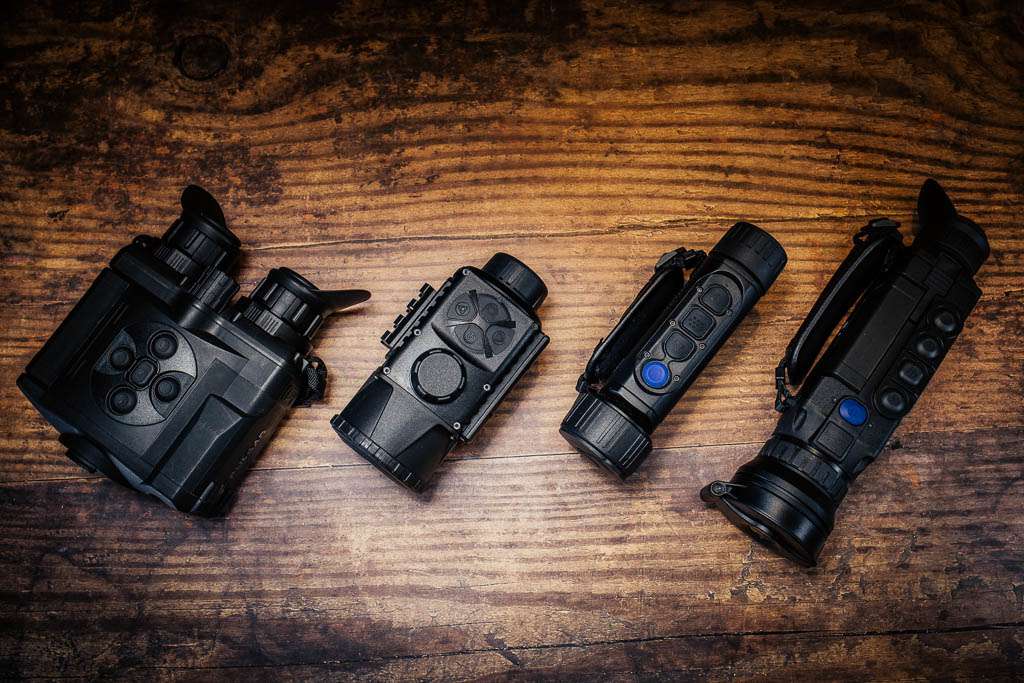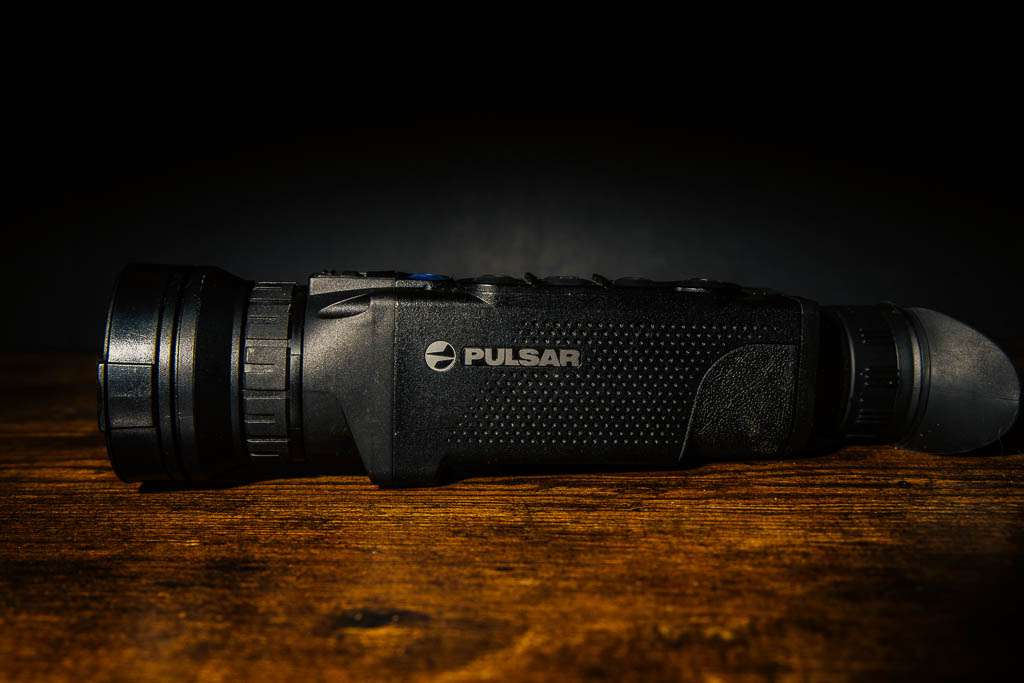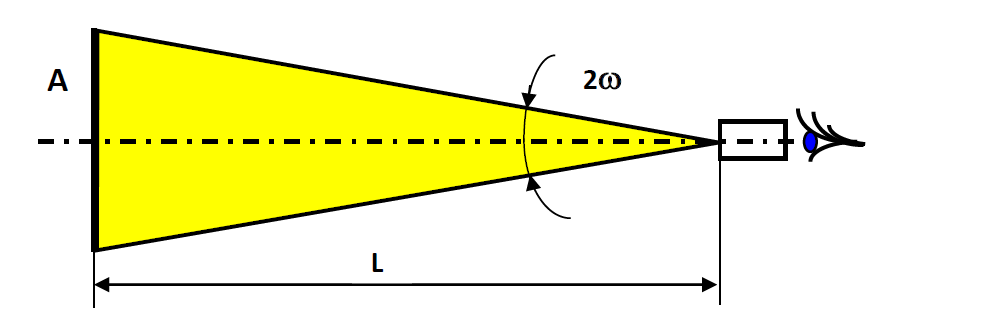Welcome to Scott Country International, the UK's leading specialist in night vision and thermal imaging.
The world of thermal imaging is bigger and more confusing than ever, in this article we take a look at Choosing The Right Hand Held Thermal Imagers, we will delve into NETD ratings, Micron values, Sensor resolution and what it all means, ensure that you can make the right choice in what is a highly confusing market place, so this guide helps you choose the latest Pulsar hand held thermal imager for your application.
We have a huge Hand Held Thermal range available from the biggest and best brands including Pulsar, HikMicro, Infiray, Zeiss etc

Whether you are choosing a Hand Held Thermal Imager for hunting, or for wildlife observation, a modern thermal imaging camera uses infrared radiation in the natural environment to build a "heat map" of thermal energy to formulate images of wildlife, people, buildings and the surrounding environment, even in conditions where natural eyesight or night vision would be useless.
Hand Held thermal imagers operate day or night, and unlike night vision it does not rely on ambient light sources or infrared illuminators, for example a thermal imager will detect heat sources at normal capability, in an environment which is completely dark such as a sealed room, when night vision would see nothing.In fog, rain, or snow a night vision device is practically useless, the IR light reflects off water droplets in the atmosphere and renders vision useless (think of driving with the wipers off) where a thermal imager still operates and depending on the thermal sensitivity of the device, sometimes with only slight image quality degradation.The Pulsar Helion 2 XP50 PRO for example has a sub 25mK NETD value which allows it to operate in very difficult conditions with minimal image quality loss.

There are various thermal tech terminology which we agree is confusing so we will take a look at what that means and how it applies to making the right choice of hand held thermal.
The resolution of a thermal sensor is easier to explain if you think about our home TV's. Before the advent of HD we used to have 4:3 or 16:9 tv displays which were a lower resolution which meant the image quality was not great..and you could see the pixels quite easily that made up the image, when HD TV's 720p, 1080P and 4K etc the resolution of the image improved, and even at close distances the pixels were so small that the image looked more natural and detailed. The thermal sensor resolution is effectively the number of pixels on a sensor array...the "size" of the sensor if you like, with the larger the resolution, the better quality the sensor.

A thermal imager such as the entry level HikMicro Lynx LC06 has a sensor resolution of 160x120 pixels which provides 19200 pixels, and if you compare that to a sensor such as the Pulsar Merger LRF XP50 which has a sensor resolution of 640x480 (307,200 pixels) and you will see that the image at the same distance has considerably better detail and image definition.
For example a roe deer at 400m with a 384x288 Pulsar Axion XQ35 is a collection of pixels formulating a blob of heat which has the rough outline of deer species that ...but with the 640x480 sensor of the Axion 2 XG35 at 400m that deer is a roe buck or a doe, and you can see hair and facial details to identify a particular animal in a herd.
Ashley from our Northern Ireland Office created this video showing how budget thermal imagers differ in performance and how lens size and sensor resolution can affect the image.
The detection range of a hand held thermal imager is effectively the distance the unit can 'detect' a heat signature of a man sized object at a determined range in ideal conditions. A detection range of 1800m does not mean you can identify a fox from a labrador at that distance, it means that the display of the thermal device will indicate pixels of heat detection at that range, but the image will be a cluster of pixels and barely form a shape.Thermal viewing ranges can be determined as Detection Range, Recognition Range and Identification Range with the latter being the range you can identify species.
Detection Range - The distance where the critical size of an observed object can be fit in two or more pixels of a thermal imaging sensor is called the detection range. Detection only means that the object is visible at a certain distance but does not give any information about its characteristics (i.e. the type of object cannot be determined).
Recognition Range - The recognition of an object means that the type of object can be defined. This means that observer can discern what is being observed i.e. human, animal, car, etc. It is considered that recognition is possible when the critical size of an object can fit into at least 6 pixels of the sensor.
Identification Range - From the hunter’s point of view, the most useful range is the identification range. Identification means that the observer can evaluate not only the type of object but also its characteristic features (e.g. wild boar male 1.2 m long and 0.7 m high) For this condition to happen the critical size of an object should fit in at least 12 pixels of the sensor. These factors are also influenced by weather, and device specification. A colder night will often mean better identification ranges than on a warm summer evening.For example, from personal experience a device such as the Pulsar Axion XM30F has a man sized detection range of 1300m....but would be able to identify a fox from a badger at around 3-400m, depending on if it is moving, or standing still etc
The Noise Equivalient Temperature Difference or NETD value effectively governs the slightest differences in temperature that your thermal camera will detect. The higher the number such as "40mk NETD" the less sensitive, and the lower the number "sub 25mK NETD" the more sensitive the camera will be, allowing you to see minute differences in temperature.This equates to a few different outcomes in your hand held thermal primarily the cameras ability to distinguish between thermal differences, so with a lower NETD rating, the fox you are watchihg with a wooded background becomes an image which is clearly a fox and clearly a forest behind, where as on a higher NETD value the differences in temperature become less noticeable to the fox and wooded background merge into one, making it more difficult to discern differences in the image.This also comes to play in rain, fog, mist etc, the lower the NETD value of the sensor, the less "noise" in the image and the more able the camera is to still deliver a clear image of the target with lots of adverse weather conditions which would impede higher NETD value devices, and totally eliminate effectiveness of natural vision and night vision.A good example of this is in the search and rescue industry, a fire fighter in a smokey room can use thermal to find a person on the ground when his natural vision or indeed a night vision camera would be impeded.
Commonly referred to as the sensor Micron value or μm value, the Pixel pitch is the distance between the centres of two pixels of a microbolometer. In thermal imaging sensors, it is measured in microns (µm) and the smaller the µm value the more detail you will observe on the target image. With most thermal sensors in our range we see the µm values of 25, 17 and 12 microns for example the 384x288 12 micron sensor of the HikMicro Gryphon GH35 will deliver a slightly enhanced image over a comparable device such as the Pulsar Axion 2 XG35 which has a 384x288 17 micron sensor.

Thermal Imagers come in all shapes and sizes and a crucial component is the lens size.
Take the HikMicro Lynx range for example, they have models from LC06, through to 10, 15, 19 and LE25, all with increasing lens and focal length.
As a rough rule, the smaller the lens, the less magnification, the larger the field of view, and therefore a larger lens provides a narrower field of view, with increased magnification but with the benefit of improved detail. The larger surface effectively acting like a larger satellite dish, capturing more thermal information.
The field of view defines the size of space that can be viewed through the optical device at a defined distance. Field of view is usually given in degrees (angular field of view is shown below in the image as 2Ѡ) or in metres for a specific distance (M) (usually 100M) to theobserved object (linear field of view is shown as A in the image).

The field of view of a digital night vision device is defined by the focal length of the objective lens (f objective lens) and the physical size of the sensor. The wider the field of view, the more comfortable observation as there is no need to move the device constantly to view the necessary part or space.It is important to understand that field of view is inversely proportional to magnification – meaning that when magnification increases field of view shrinks. This is one of the reasons why infrared systems (thermal imagers in particular) with high magnification are not manufactured.
At the same time, it is important to understand that an increase in the field of view leads to a decrease in detection and recognition range.
The frame rate is one of the main characteristics of a thermal imaging device. From the user’s point of view, it is the number of frames displayed on the screen in one second.
This is usually measured in Hertz (Hz) where 1Hz is equal to 1 frame per second. The higher the frame rate value, the less visible the effect of lagging of image produced by thermal imager in respect to the real scene.
Observation of dynamic scenes with a thermal imager that has 9 fps rate shows a blurry image and object movements may seem laggy and “jerky”. On the contrary, the higher the frame rate, the smoother will be the rendering of dynamic scenes and 50hz frame rate is common place on virtually all our hand held thermal devices.
The thermal display of your device is effectively the "screen" that you view through the eye piece, and they can come in all sorts of display types and resolutions.Like everything in life, people will argue over one method being better than the other...whether its OLED, LED, LCD, AMOLED, and which one has the best factors over another. This display transmits the visual information that has been converted by the thermal sensor, effectively showing an image of the heat map the lens and sensor has collected, and like your TV screen at home, the higher the resolution, the better quality the image, for example some thermal sensors have a 640x480 display and some have a 1920x1080 HD display.OLED - Offers a wider field of view on the display effectively delivering a larger image on the screen. This type of device are less expensive and usually relates to the overall cost of the unit.AMOLED - Commonly found in most Pulsar Hand Held Thermal Imagers an AMOLED display often has a higher refresh rate meaning the image is translated from the sensor to your eye quicker so there is less noticable lag in the image, so a smoother image is observed with less "lag or stutter" when panning across a scene quicker.